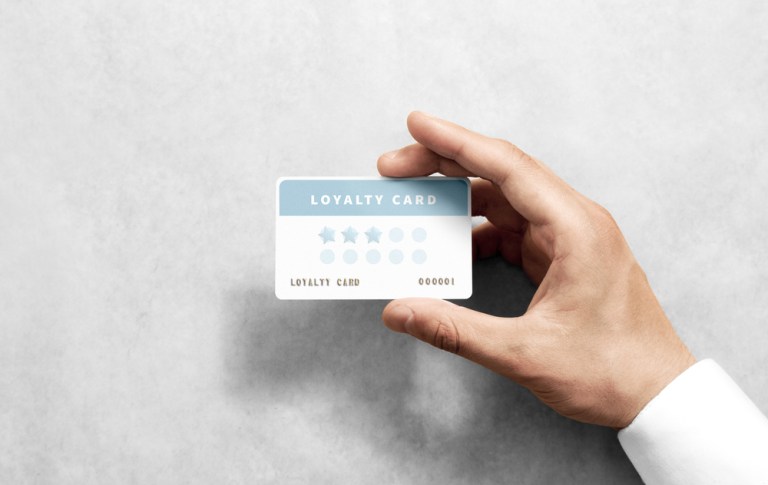Loyalty has come a long way in the payments realm, from the days when strict terms of rewards programs were more frustrating than enticing for consumers.
Gone are the days when you had to redeem points for miles and miles for flights – but only if you were flying two years from that day, on the second Thursday in March, at 7:30 p.m., with the condition that you make three stops before finding your way to the final destination.
Today, rewards programs are tied to more tangible, meaningful rewards. Take, for example, Uber’s recently announced four-tier loyalty program tied to Uber POOL and Uber Eats, which will eventually extend to bikes and scooters. Services offered include price protection and free food delivery, once users reach certain spending thresholds.
For many consumers, perks are a key driver of their credit card choice, whether it’s airline miles, cash-back or points that can be redeemed for a variety of items. These perks have been an advantage for credit cards, but could that erode as, say, Alipay offers integrated loyalty programs? Venmo, too, has been rumored to be jumping on the loyalty bandwagon.
Loyalty programs are now tailored and flexible, and a growing number are powered by artificial intelligence (AI), all in pursuit of giving consumers what they want. That comes as digital payments are entering the mainstream, driven by technology and demographics.
This all should serve as food for thought as the holidays are upon us. It’s time to shop – and shopping takes time. With the plethora of alternative payment methods (APMs) out there, from Zelle to Venmo and beyond, what remains top of wallet and top of mind becomes the payment method of choice. For APMs and other players – especially the traditional credit card issuers – the question remains: How to keep the consumer engaged?
Advertisement: Scroll to Continue
There’s recognition among the marquee names in payments that the landscape is shifting. As depicted over the summer in our Innovation Readiness Playbook, FIs are focusing efforts across digital wallets, P2P payments and, of course, loyalty programs.
In fact, more than half of FIs plan to focus on digital wallets over the next three years. A bit more than a third of those surveyed plan to also focus on loyalty in that timeframe. In September, Bank of America announced that it would roll out a Premium Rewards credit card that offers customers unlimited points that never expire.
In an interview with Karen Webster, Gaylon Jowers, senior executive vice president and president of Issuer Solutions at TSYS, said that such jockeying for consumer spend and loyalty does not mean that issuers will necessarily lose share to the in-app payment upstarts.
APMs, he said, are simply helping to speed a trend that benefits all players, including the issuers – the movement away from cash – but there’s still some bifurcation of how these payment methods are used.
As for loyalty programs in general, Jowers said, spanning issuers and APMs, there are benefits to be had from robust loyalty programs – namely, “why would I not use something where I receive really good benefits?”
Some Guiding Principles
But in capturing the attention of the consumer, and especially a few certain choice demographics (more on this in a minute), some guiding principles remain, explained Jowers.
In a loyalty and rewards space that is both crowded and confusing, “the flexibility and ease of use in redeeming your points and being able to understand your points is very important,” Jowers said. To satisfy those requirements, he added, the omnichannel experience is paramount: “It has to be frictionless with no strings attached. If you can pull [the program] up, see the reward, the transaction and the usability of the points all in one place — regardless if it’s in-app or in-store — then there’s a good chance that you will stick with that program.”
The Connected Ecosystem
“We call it a connected ecosystem,” Jowers said, of payments powering rewards and rewards powering loyalty and redemption, all navigated easily and quickly. When it comes to a loyalty program, it’s all about a good user experience. He offered an example of a consumer shopping for home goods who instantly receives $50 at the point of sale, regardless of whether they used a traditional credit card or alternative payment method. He or she is likely to keep returning to that merchant — and to use that same method of payment.
For all stakeholders, Jowers told Webster, there has been a general movement toward using artificial intelligence and machine learning to gain real-time insights into consumers’ preferences and buying habits – and where they are browsing online at any given moment. “You can push this knowledge,” he said, to individuals’ smartphones or other devices and create loyalty offers specific to that consumer.
“Consumers today expect so much more when it comes to what they get from their credit card. They want benefits that fit their lifestyle. They also don’t like clutter and spam ads,” Jowers acknowledged. Targeted rewards and offers can help convert browsing (and tentatively filled online baskets) into sales, which “help the loyalty experience, help the brand experience with the card program and help the retailer, so it is a win for all three.”
The Millennials Cometh
Webster noted that along with technology, the demographics picture is shifting a bit. We are talking here, of course, about millennials. Specifically, the bridge millennials, the older half of the 30- to 40-year-old segment, should have the attention of issuers and merchants, said Jowers.
“They are more discerning, and issuers and merchants have a real opportunity to connect with them when a transaction prompts an offer that is tailored specifically to their shopping patterns,” he noted. That strategy can be useful to retailers, especially considering recent research PYMNTS conducted that found bridge millennials make 18 to 19 significant purchases annually and spend roughly $2,225 on those each year.
Eyeing the Debit Landscape Amid Thin Margins
There’s a wrinkle here, though. Bridge millennials are more apt to use debit than credit or PayPal – and all three methods are used more often than retail cards, according to the data. Debit carries thinner margins on a transactional basis, so that makes targeted programs via AI and machine learning all the more crucial, said Jowers.
One way to grab the loyalty of this segment is to offer convenience to bridge millennials, noted Jowers, adding that the Amazon effect has proven that time is as valuable, or more valuable, than money. Consumers are working longer hours, managing family obligations and generally staying very busy, so offering additional services for a bit of a surcharge can make all the difference. Amazon is also adding value though speedier delivery times, Jowers noted.
“We are all demanding so much more” of commerce, he said, noting that the utility of loyalty programs moves beyond dollars and cents. “It is more about, ‘is it making my life easier and easier to transact?’ That is the key.”




